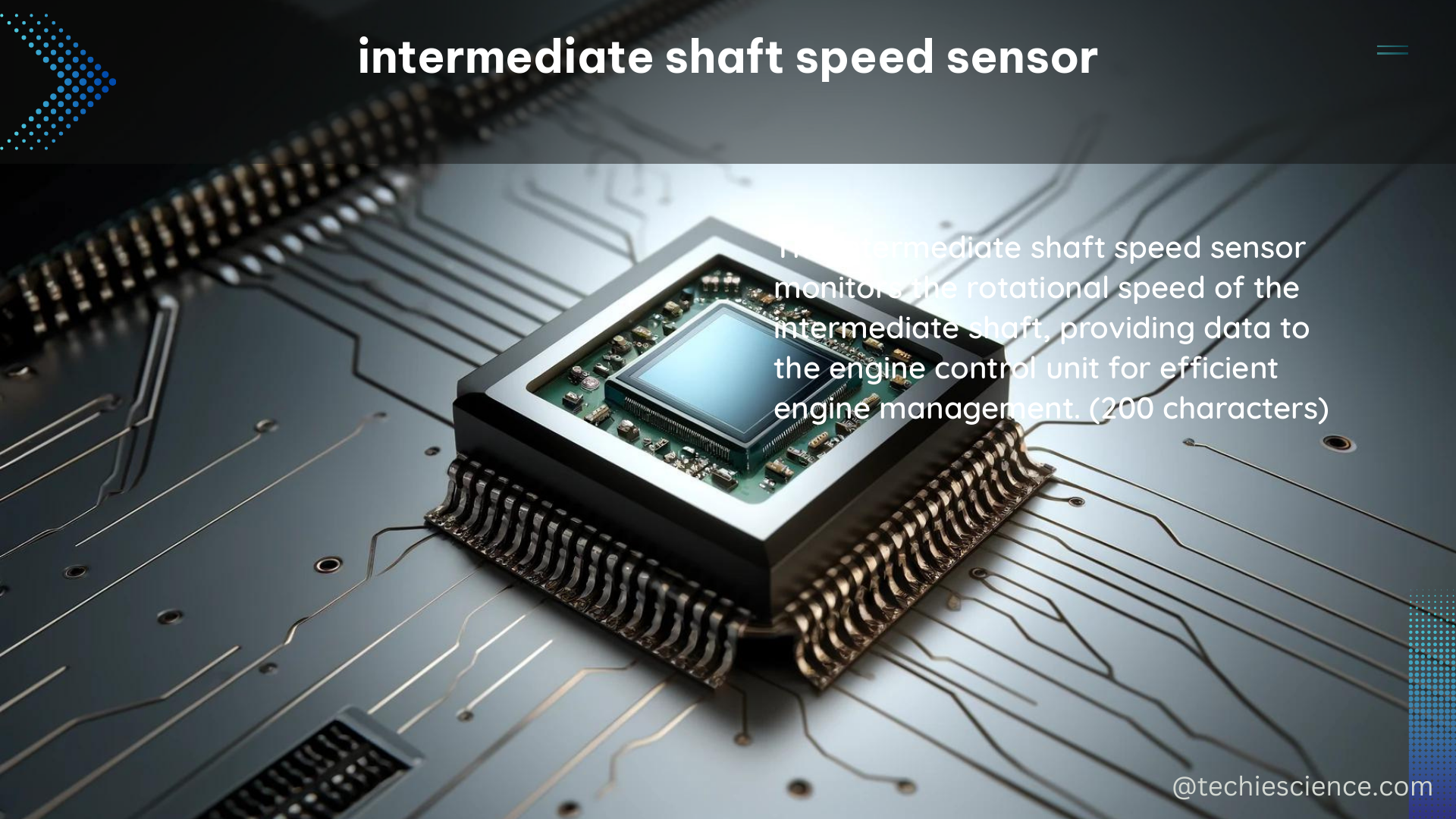The intermediate shaft speed sensor, also known as the Intermediate Shaft Sensor (ISS) or Turbine Shaft Sensor (TSS), is a critical component in modern automatic transmissions. It is responsible for sending speed data to the transmission control module (TCM), ensuring proper gear shifting and overall transmission function.
Understanding the Intermediate Shaft Speed Sensor
The intermediate shaft speed sensor is typically located on top of the transmission, and it measures the rotational speed of the intermediate shaft or turbine shaft. This information is then relayed to the TCM, which uses it to determine the appropriate gear to engage based on the vehicle’s speed and driving conditions.
Sensor Specifications and Measurements
The intermediate shaft speed sensor typically measures resistance between the appropriate pin at the transmission PCM connector, harness side, and the sensor itself. The resistance value can vary depending on the specific vehicle model, but a common specification is around 1.2 kΩ for a 2006 Ford F350.
It’s important to note that the sensor may be a standalone component or integrated with the turbine shaft sensor (TSS) in some vehicle models, such as the 2009 Ford F350 with a 5R110W transmission.
Troubleshooting Intermediate Shaft Speed Sensor Issues

When the intermediate shaft speed sensor is malfunctioning, it can lead to various transmission-related problems, including shifting issues, error codes, and even limp mode.
Diagnosing Sensor Faults
One of the most common diagnostic codes associated with the intermediate shaft speed sensor is the P0791 code, which indicates a “Intermediate Shaft Speed Sensor Circuit Range/Performance” issue. This code can be triggered by a variety of factors, including:
- Sensor failure or malfunction
- Wiring issues, such as shorts or open circuits
- Sensor signal interference or noise
- Transmission control module (TCM) programming or calibration problems
To diagnose the issue, you’ll need to perform a series of tests, including:
- Checking the sensor’s resistance value and comparing it to the manufacturer’s specifications
- Inspecting the wiring harness for any damage or loose connections
- Verifying the sensor’s signal output using a multimeter or oscilloscope
- Checking for any related diagnostic trouble codes in the TCM
Replacing the Intermediate Shaft Speed Sensor
If the sensor is found to be defective, it will need to be replaced. The process for replacing the sensor can vary depending on the vehicle model, but it typically involves the following steps:
- Locate the sensor, which is usually accessible from the top of the transmission.
- Disconnect the electrical connector from the sensor.
- Remove the sensor from the transmission housing, taking note of the orientation and any mounting hardware.
- Install the new sensor, ensuring it is properly aligned and secured.
- Reconnect the electrical connector and ensure a secure connection.
- Clear any diagnostic trouble codes and test the system for proper operation.
It’s important to consult the vehicle’s service manual or a professional mechanic for specific instructions and guidance on replacing the intermediate shaft speed sensor, as the process can vary significantly between different makes and models.
Conclusion
The intermediate shaft speed sensor is a critical component in modern automatic transmissions, and issues with this sensor can lead to a variety of transmission-related problems. By understanding the sensor’s function, specifications, and troubleshooting techniques, you can effectively diagnose and address any issues that may arise, ensuring your vehicle’s transmission continues to operate smoothly.
References:
- P0793 Code: Intermediate Shaft Speed Sensor A Circuit No Signal
- P0791 Code: Intermediate Shaft Speed Sensor
- P0791 Code Issue
- 2006 F350 Shifts Hard, a Mile Goes Limp, Light Flashes
- Intermediate Shaft Speed Sensor Replacement

The lambdageeks.com Core SME Team is a group of experienced subject matter experts from diverse scientific and technical fields including Physics, Chemistry, Technology,Electronics & Electrical Engineering, Automotive, Mechanical Engineering. Our team collaborates to create high-quality, well-researched articles on a wide range of science and technology topics for the lambdageeks.com website.
All Our Senior SME are having more than 7 Years of experience in the respective fields . They are either Working Industry Professionals or assocaited With different Universities. Refer Our Authors Page to get to know About our Core SMEs.